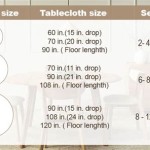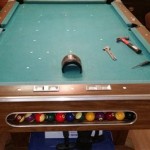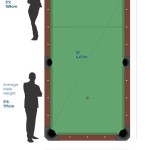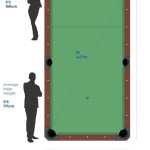The Enduring Allure of the Salvaged Wood Trestle Table
The salvaged wood trestle table represents a compelling blend of rustic charm, sustainable design, and enduring practicality. These tables, crafted from reclaimed lumber, offer a unique aesthetic that transcends mere functionality, becoming a statement piece in any dining room, kitchen, or even outdoor setting. The appeal lies not only in their visual character but also in the environmentally conscious nature of their production and the inherent story imbued within the wood itself. The use of salvaged wood provides an alternative to harvesting new timber, contributing to forest conservation and minimizing environmental impact.
Trestle tables, characterized by their supportive framework of angled legs connected by a central beam, have a long and storied history. Their design facilitates flexibility, allowing for easy disassembly and storage when not in use. This practicality, combined with the visual warmth of reclaimed wood, makes the salvaged wood trestle table a popular choice for those seeking both style and substance.
The Sourcing and Preparation of Salvaged Wood
The journey of a salvaged wood trestle table begins with the careful sourcing of reclaimed lumber. This process can involve several avenues, including demolition sites, old barns, warehouses, and even submerged logs recovered from riverbeds. Each source imparts distinct characteristics to the wood, resulting in a table with a unique patina and history. For example, wood salvaged from a historic barn might exhibit nail holes, saw marks, and weathering indicative of decades of exposure and use. Lumber reclaimed from industrial structures may feature paint remnants or staining that adds to its character.
Once sourced, the salvaged wood undergoes a meticulous preparation process. This typically involves cleaning, removing nails and other debris, and assessing the wood's structural integrity. Kiln drying is often employed to reduce the moisture content of the wood, preventing warping and cracking in the finished table. This step is crucial for ensuring the table's longevity and stability. Following drying, the wood is typically planed and sanded to achieve a smooth, even surface while preserving the desired rustic texture and character marks.
The type of wood used in a salvaged wood trestle table significantly impacts its appearance and durability. Popular choices include oak, pine, maple, and fir, each offering unique grain patterns, color variations, and hardness levels. Oak, known for its strength and durability, is a common selection for tabletops and support structures. Pine, with its warm tones and readily visible knots, offers a more rustic and affordable option. The selection of wood will often be dictated by what is available from reclamation sources and the desired aesthetic of the finished piece.
Design and Construction Considerations
The design of a salvaged wood trestle table must carefully consider both aesthetic appeal and structural stability. The trestle base, the defining feature of this type of table, must be robust enough to support the weight of the tabletop and withstand everyday use. Traditional trestle designs feature angled legs connected by a central stretcher, providing a stable and visually balanced support system. Variations on this design might incorporate metal accents, such as steel brackets or legs, to enhance both strength and visual interest.
The tabletop itself can be constructed from a single slab of salvaged wood or from multiple boards joined together. When using multiple boards, careful attention must be paid to alignment and joinery to ensure a smooth and level surface. Techniques such as tongue-and-groove or mortise-and-tenon joints are often employed to create strong and durable connections between the boards. The edges of the tabletop can be left raw and unfinished to showcase the natural character of the wood or finished with a profile such as a bevel or roundover.
Finish selection is another crucial aspect of the design process. A variety of finishes can be applied to protect the wood from moisture, stains, and scratches while enhancing its natural beauty. Options range from clear sealants that allow the wood's natural color and grain to shine through to tinted stains that add depth and warmth. Oil-based finishes, known for their penetrating properties and durability, are a popular choice for salvaged wood trestle tables. Water-based finishes offer a more environmentally friendly alternative with reduced VOC emissions.
The Environmental and Aesthetic Benefits
The primary environmental benefit of using salvaged wood in furniture construction is the reduction in demand for newly harvested timber. By repurposing wood that would otherwise be discarded, we conserve forests, reduce deforestation, and minimize the carbon footprint associated with logging and processing new lumber. This commitment to sustainability resonates with environmentally conscious consumers who seek to minimize their impact on the planet.
Beyond the environmental advantages, salvaged wood trestle tables offer a unique aesthetic that is difficult to replicate with new materials. The imperfections and character marks inherent in reclaimed lumber, such as nail holes, knots, and weathering, tell a story of the wood's past. These imperfections add depth and visual interest to the table, creating a one-of-a-kind piece that stands apart from mass-produced furniture.
The rustic charm of a salvaged wood trestle table can complement a variety of interior design styles, from farmhouse and industrial to modern and eclectic. Its organic texture and warm tones create a welcoming and inviting atmosphere in any space. The table can serve as a focal point in a dining room, providing a gathering place for family and friends. It can also be used as a statement piece in a living room or office, adding character and warmth to the overall decor.
Furthermore, the durability of salvaged wood often surpasses that of newly harvested timber. Over time, wood naturally compresses and hardens, making reclaimed lumber particularly resistant to wear and tear. This inherent durability, combined with proper construction and finishing techniques, ensures that a salvaged wood trestle table will last for generations, becoming a cherished heirloom that can be passed down through families.
The salvaged wood trestle table is more than just a piece of furniture; it is a testament to the beauty of repurposing, the importance of sustainability, and the enduring appeal of handcrafted design. By choosing a salvaged wood trestle table, consumers not only acquire a unique and stylish piece for their home but also contribute to a more environmentally responsible future.

Salvaged Wood Trestle Round Tables

Salvaged Wood Trestle Table Clubcu

Salvaged Wood Trestle Table From Restoration Hardware 17 Elegant Classic Tables Decoist Farmhouse Dining Room Luxury Design

Salvaged Wood Trestle Rectangular Extension Dining Table Rh

Salvaged Wood Trestle Dining Table Cottage Room Patrick Ahearn Architecture

Reclaimed Barn Wood Trestle Table From Dutchcrafters Amish Furniture

Of My Rh Salvaged Wood Trestle Table

Salvaged Wood Trestle Table Clubcu

Rh Salvaged Wood Trestle Rectangular Extension Dining Table Set Of 5 Chairish

Salvaged Wood Trestle Rectangular Table Fast Made From Reclaimed Barn
Related Posts








